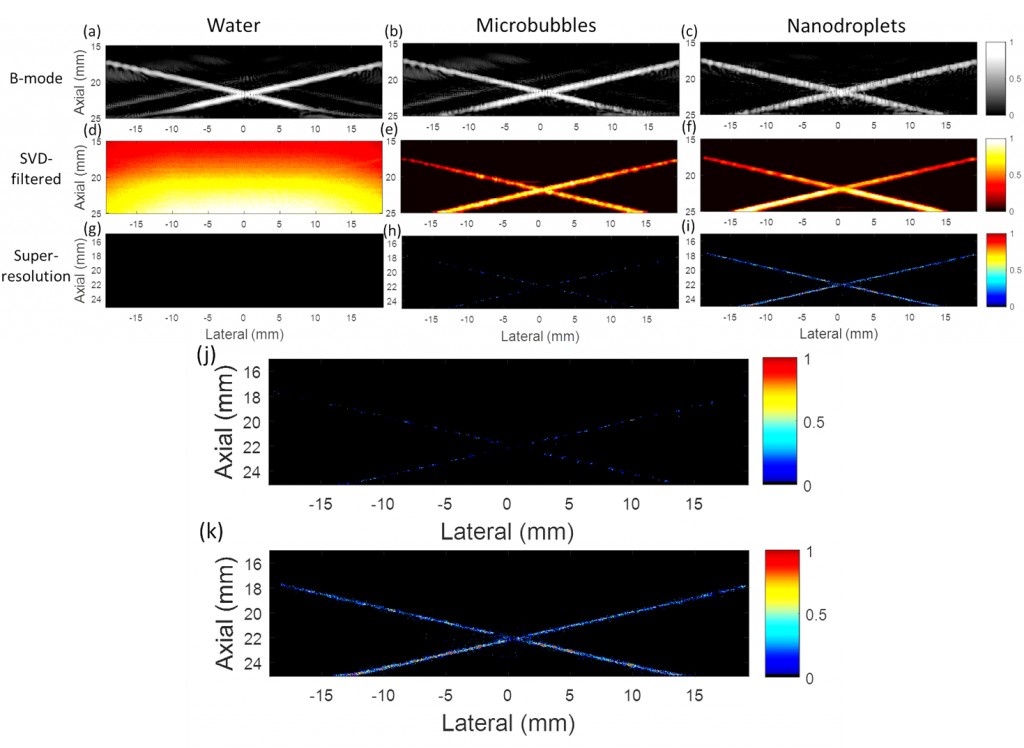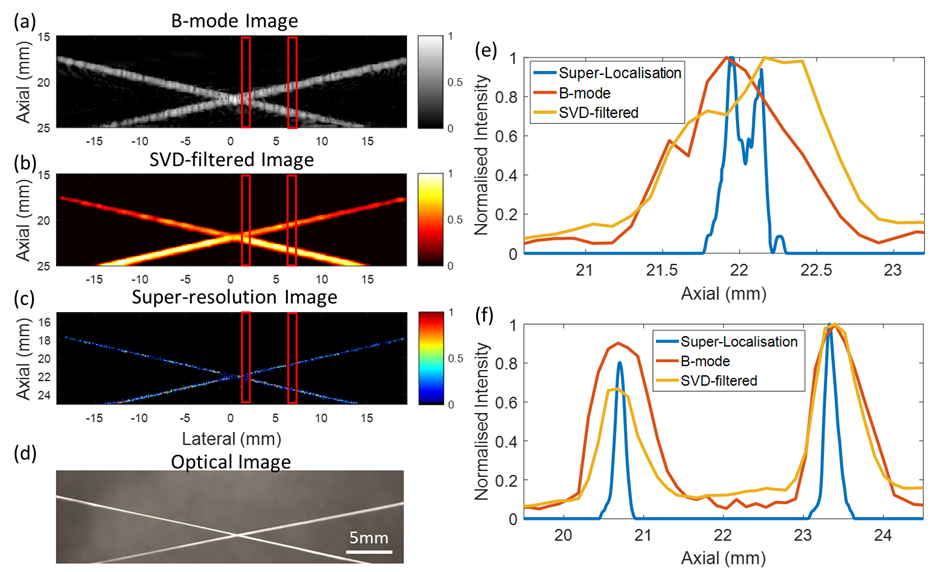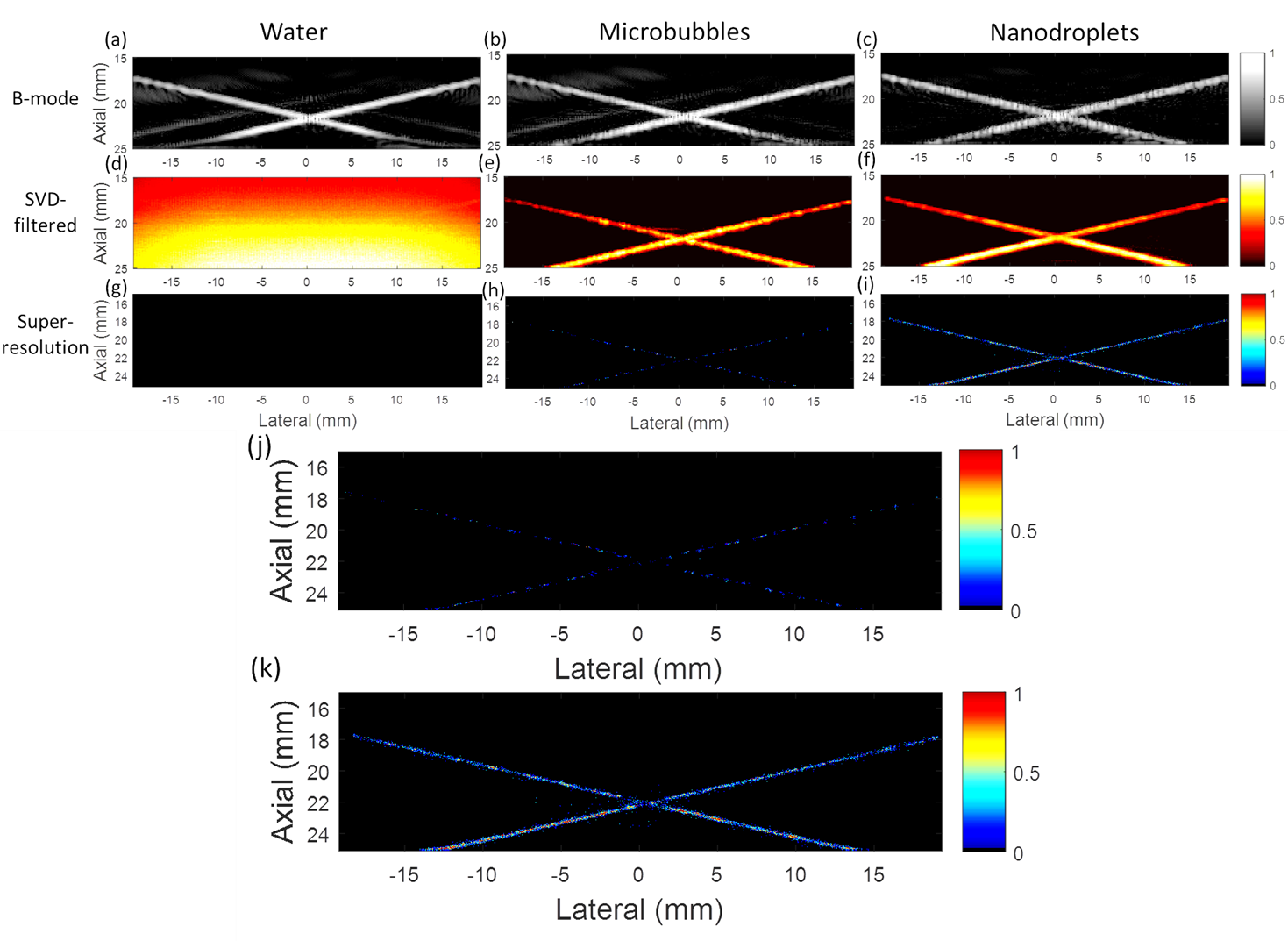G. Zhang, S. Harput, H. Hu, K. Christensen-Jeffries, J. Zhu, J. Brown, C. H. Leow, R. J. Eckersley, C. Dunsby, and M.X. Tang, “Fast Acoustic Wave Sparsely Activated Localization Microscopy (fast-AWSALM): Ultrasound Super-Resolution using Plane-Wave Activation of Nanodroplets“
Affiliation
G. Zhang, S. Harput, H. Hu, J. Zhu, C. H. Leow, and M.-X. Tang are with the Ultrasound Laboratory for Imaging and Sensing Group, Department of Bioengineering, Imperial College London, London, SW7 2AZ, U.K. (email: mengxing.tang@imperial.ac.uk)
K. Christensen-Jeffries, J. Brown, and R. J. Eckersley are with the Division of Imaging Sciences, Biomedical Engineering Department, King’s College London, London, SE1 7EH, U.K.
C. Dunsby is with the Department of Physics and the Centre for Pathology, Imperial College London, London, SW7 2AZ, U.K.
Abstract:
Localization-based ultrasound super-resolution imaging using microbubble contrast agents and phase-change nano-droplets has been developed to visualize microvascular structures beyond the diffraction limit. However, the long data acquisition time makes the clinical translation more challenging. In this study, fast acoustic wave sparsely activated localization microscopy (fast-AWSALM) was developed to achieve super-resolved frames with sub-second temporal resolution, by using low-boiling-point octafluoropropane nanodroplets and high frame rate plane waves for activation, destruction, as well as imaging.
Fast-AWSALM was demonstrated on an in vitro microvascular phantom to super-resolve structures that could not be resolved by conventional B-mode imaging. The effects of the temperature and mechanical index on fast-AWSALM
Supporting Bodies:
The research was partially funded by the UK EPSRC under Grants EP/N015487/1, EP/N014855/1 and EP/M011933/1, and the CRUK Multidisciplinary Project Award (C53470/A22353).



